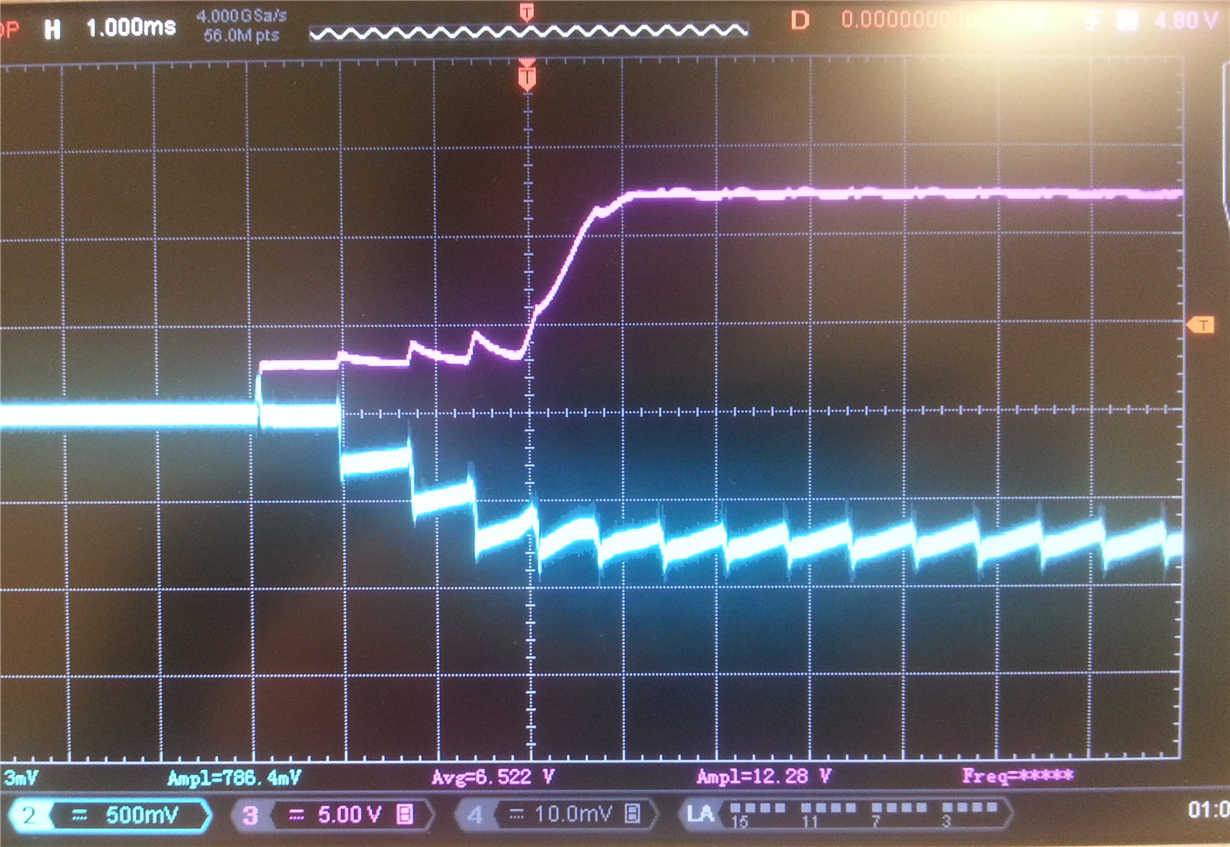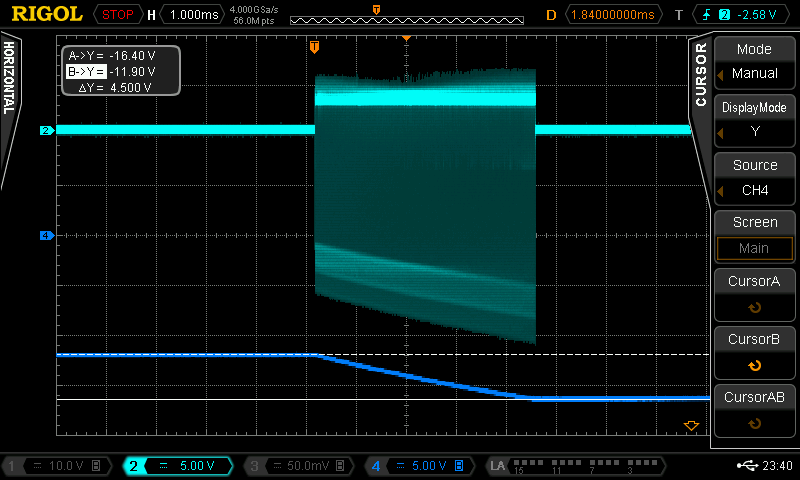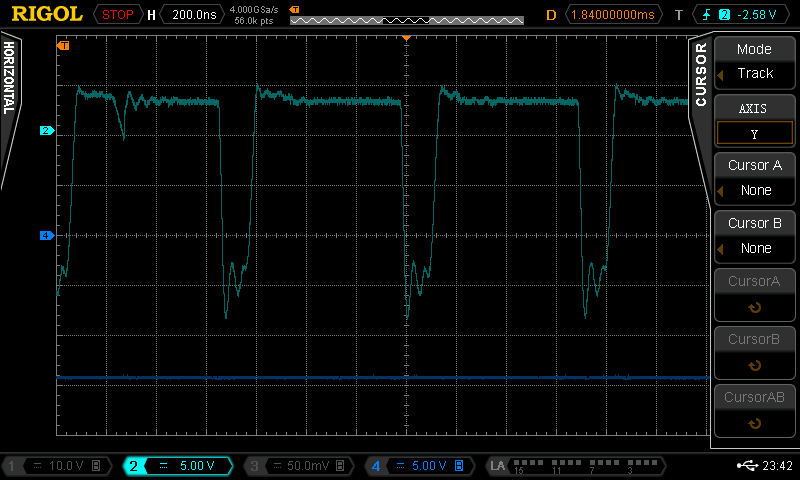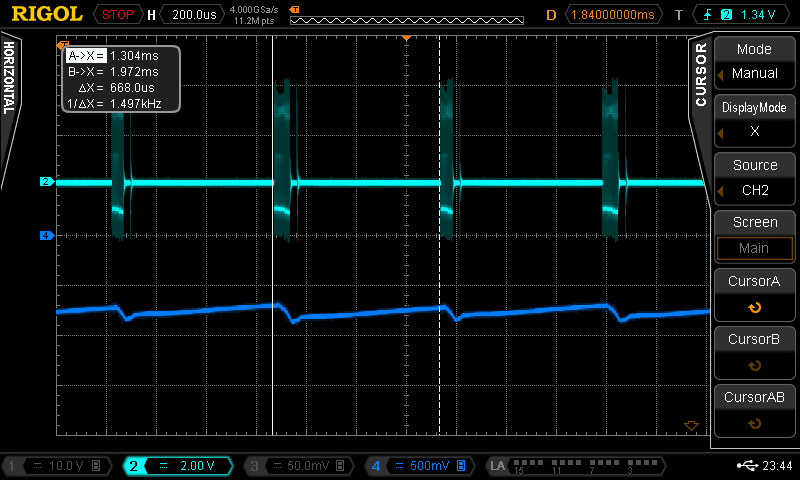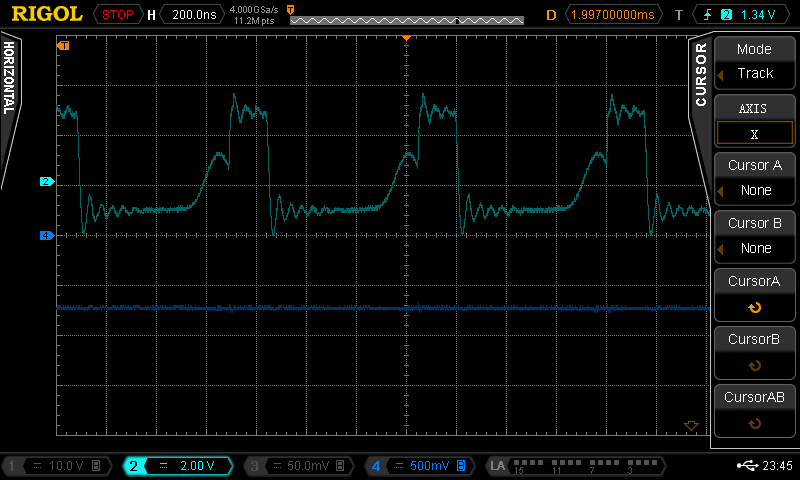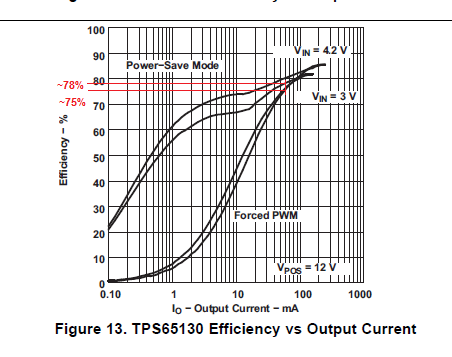Other Parts Discussed in Thread: TPS65130
Hello,
I am currently trying to TPS65131 for an audio project. My requirements are:
* single LiPo Cell source
* +/- 12V output
* up to 100mA per side
* no noise in the audio band
For Reference, my scematic and Layout:
(please note: the 100u tantal caps are not present at the moment. The 10u caps are 22u ceramic types at the moment)
The following is true:
* +12V works as desired in all below described screnarios
* with no load and power-safe on, -12V ramps up and stays relatively steady at -12V
* with no load and power-safe off, -12V ramps up, but produces large 5V jumps in a sawetooth-manner
* with about 50mA Load and power-safe on, -12V fails to ramp up (sticks at ~ -0.2..-0.3V) and ~1..2 kHz noise is audible
* with about 50mA Load and power-safe on, -12V fails to ramp uo and ~1..2 kHz noise is audible
Here a Scope-Shot from one failed ramp-up attempt. The blue curve is the failed attempt.
Measured under load Condition:
FBN: 1.064V (injected noise present)
VREF: 1.215 (injected noise present)
OUTN: -750mV (sawtooth, as shown above)
Ground potential is virtually the same on the board (in the range of 1..2 mV) and does however exhibit injected noise (then again, only a couple of 10mV)
The following threads have already been consulted:
https://e2e.ti.com/support/power_management/non-isolated_dcdc/f/196/t/626451
https://e2e.ti.com/support/power_management/non-isolated_dcdc/f/196/t/607104
https://e2e.ti.com/support/power_management/non-isolated_dcdc/f/196/t/617831
https://e2e.ti.com/support/power_management/non-isolated_dcdc/f/196/t/585589
The following was tried:
* removing C15 (still does not ramp up)
* increasing C15 to 20p (still does not ramp up)
* using 6.8p and 100k in series instead of C15 alone (decreases no-load fluctuation amplitude significantly, but still no ramp-up)
The question is:
Why does the negative converter does not ramp up under load? Wham am i missing here?
Thank you a lot for help !
Kind regards


